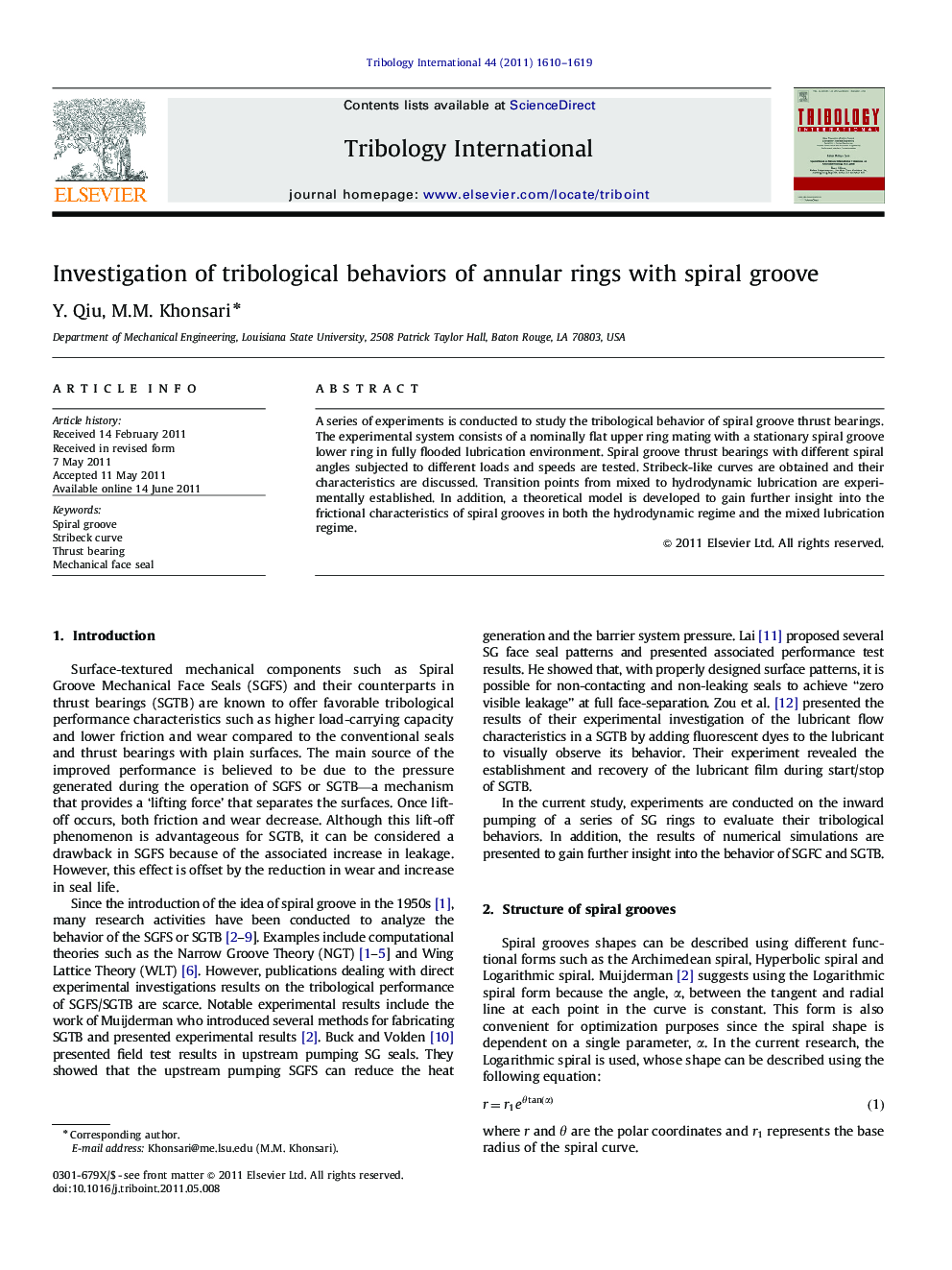| Article ID | Journal | Published Year | Pages | File Type |
|---|---|---|---|---|
| 615331 | Tribology International | 2011 | 10 Pages |
A series of experiments is conducted to study the tribological behavior of spiral groove thrust bearings. The experimental system consists of a nominally flat upper ring mating with a stationary spiral groove lower ring in fully flooded lubrication environment. Spiral groove thrust bearings with different spiral angles subjected to different loads and speeds are tested. Stribeck-like curves are obtained and their characteristics are discussed. Transition points from mixed to hydrodynamic lubrication are experimentally established. In addition, a theoretical model is developed to gain further insight into the frictional characteristics of spiral grooves in both the hydrodynamic regime and the mixed lubrication regime.
► Experiments on spiral groove rings with different groove depths show that the groove depth is important in determining the tribological behavior of a specimen: the lubrication regime shifts from mixed to hydrodynamic at a lower speed for the shallower spiral groove. ► Under the same load and when operating in high speeds, a specimen with a deep groove has a lower coefficient of friction (COF) compared to a specimen with shallow-depth groove. ► The spiral angle has a major influence on the friction coefficient and tribological performance of the specimens. It requires higher operational speed for the frictional system to enter into the hydrodynamic lubrication regime when the spiral angle is high. ► Under the same operating conditions, a lower spiral angle specimen provides a lower COF than that of a high spiral angle.
